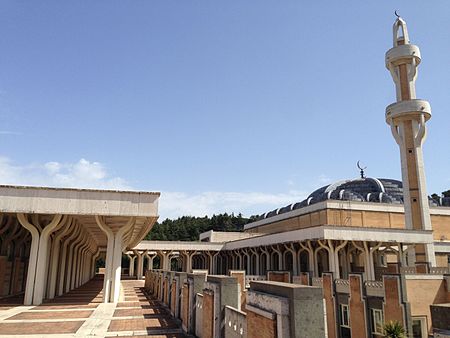Mosque of Rome

The Mosque of Rome (Italian: Moschea di Roma), situated in Parioli, Rome, Italy, is the largest mosque in the Western world in terms of land area. It has an area of 30,000 m2 (320,000 sq ft) and can accommodate more than 12,000 people. The building is located in the Acqua Acetosa area, at the foot of the Monti Parioli, north of the city. It is also the seat of the Italian Islamic Cultural Centre (Italian: Centro Culturale Islamico d'Italia). In addition to being a meeting place for religious activities, it provides cultural and social services variously connecting Muslims together. It also holds teachings, wedding ceremonies, funeral services, exegesis, exhibitions, conventions, and other events, despite being located in an area with relatively few Muslims.
Excerpt from the Wikipedia article Mosque of Rome (License: CC BY-SA 3.0, Authors, Images).Mosque of Rome
Viale della Moschea, Rome Parioli
Geographical coordinates (GPS) Address External links Nearby Places Show on map
Geographical coordinates (GPS)
| Latitude | Longitude |
|---|---|
| N 41.934769444444 ° | E 12.495222222222 ° |
Address
Moschea di Roma
Viale della Moschea
00197 Rome, Parioli
Lazio, Italy
Open on Google Maps







